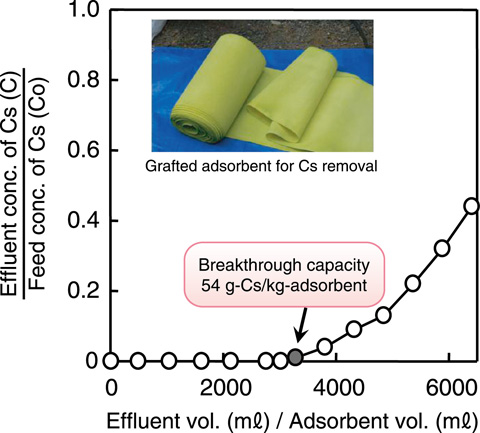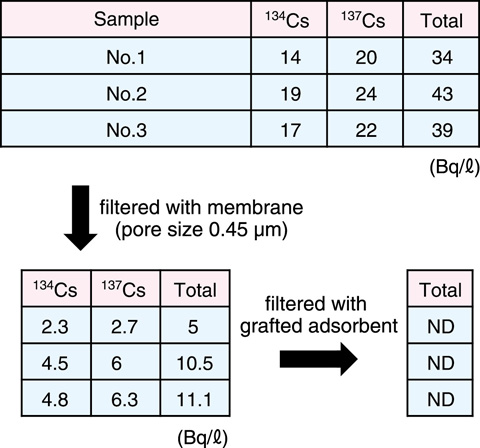
Fig.1-28 Breakthrough curve of grafted adsorbent for Cs adsorption

Fig.1-29 Field tests of grafted adsorbent for radioactive removal in the Fukushima area
The large tsunami caused by the Great East Japan Earthquake on March 11, 2011 damaged the electricity supply and halted the circulation of the cooling water of the nuclear reactor in the TEPCO’s Fukushima Daiichi NPS. As a result of the meltdown of the nuclear reactor, radioactive materials were dispersed into the surroundings, including numerous water bodies.
To selectively remove radioactive cesium (Cs) from such contaminated water, we have developed a fibrous absorbent with ammonium 12-molybdophosphate (AMP) by radiation grafting of suitable monomer onto polyethylene nonwoven fabric. An evaluation of the effectiveness of this adsorbent in Cs removal under continuous flow was conducted by pumping 1 ppm Cs solution into a column (7 mm inner diameter) in which 47 mg of AMP-type adsorbent was packed. The flow rate was expressed by space velocity (SV [h-1]), which was adjusted at 300 h-1 and calculated by dividing the flow rate of the solution by the volume of adsorbent packed in the column, referred to as the bed volume (BV). The outflow solution was fractionally collected each minute using a fraction collector. The breakthrough point was defined as the point at which the concentration at the outlet reached 1% (C/C0 = 0.01) of that at the inlet. Fig.1-28 illustrates the breakthrough curve of Cs for AMP-type adsorbent. The breakthrough capacity of the adsorbent at C/C0 was 54 g-Cs/kg-adsorbent (4 mol/kg), indicating that a column packed with AMP-type adsorbent can process about 3000 times its packed volume. The grafted absorbents, folded in a cartridge, were tested for a pond in Iitate-mura in Fukushima Prefecture (Fig.1-29). The results indicated that the radioactive Cs was adsorbed successfully, and removed to “Not Detected” (ND) level. An additional advantage of this technique is that no sludge was produced as a result of such direct collection of the toxic component, which would otherwise require additional handling and purification.
The present study was sponsored by the Ministry of Education, Culture, Sports, Science and Technology of Japan (MEXT). We thank the Iitate-mura municipal office for assistance with field experiments.